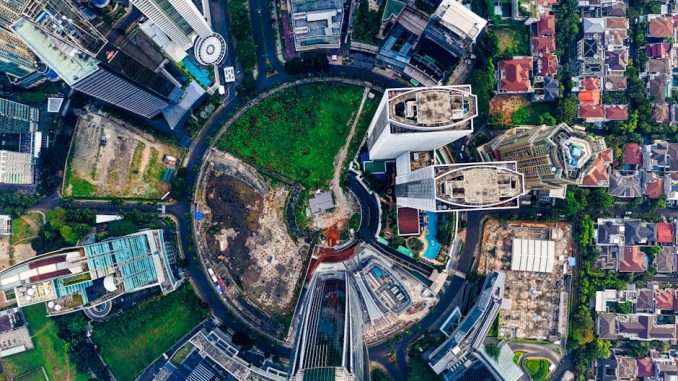
In recent years, the construction sector has witnessed a quiet yet profound shift, driven by the convergence of Internet of Things (IoT) technology and sustainable green building design. This intersection holds immense potential to redefine the future of urban development, offering innovative solutions that enhance both sustainability and efficiency. A recent groundbreaking study has delved into this synergy, posing the crucial question: How can IoT technology enhance the sustainability and efficiency of green building design? The findings from this research could significantly reshape urban landscapes, contributing to a greener and more sustainable future.
Read more about sustainable development.
The potential of IoT technology to revolutionise the development, operation, and management of buildings is vast. By integrating IoT into green building design, we can markedly improve energy efficiency, sustainability, and overall building performance. IoT applications in green buildings are diverse and impactful, including smart building automation, energy monitoring, occupant engagement, and predictive maintenance. Green buildings, designed with a holistic approach, focus not only on energy efficiency but also on waste reduction, interior environmental quality, and minimising the impact on the surrounding environment. The study aims to develop a sustainable green building space design model incorporating IoT technology, providing practical guidance for architects and designers in this evolving field.
IoT technology plays a pivotal role in enhancing building space design by enabling intelligent automation, energy monitoring, occupant engagement, and predictive maintenance. Through IoT, we can optimise energy use, conserve water, improve waste management, and enhance the overall indoor environmental quality of green buildings. This integrated IoT and green building design model aims to improve building efficiency, occupant comfort, and overall sustainability. By improving energy efficiency and sustainability, IoT can play a key role in advancing sustainable urban development, promoting greener cities, and healthier living environments.
One of the standout features of IoT technology in green buildings is its ability to provide real-time monitoring and management of energy usage, predictive maintenance, and automatic demand response. IoT technology can optimise energy consumption, adapt building systems, and enhance occupant comfort and productivity in green buildings. These advancements prioritise occupant health, indoor air quality, thermal comfort, natural lighting, acoustics, and the use of low-toxicity materials. The integrated IoT and green building design model can be utilised throughout a building’s lifecycle, from design and construction to operation and maintenance. This comprehensive approach helps architects and engineers incorporate IoT technologies to meet green building requirements and improve resource efficiency.
Despite the numerous benefits, the study identifies several obstacles in incorporating IoT technology into green building design. These challenges include upfront costs, data security concerns, the need for specialised skills, and compatibility issues. However, addressing these challenges is essential for the successful integration of IoT technology into green buildings. The potential market for IoT technology in the green construction industry is significant, contributing to sustainable urban development. Research findings indicate that IoT technology can significantly enhance resource efficiency, energy and water conservation, waste reduction, and indoor environmental quality in green buildings.
The integrated IoT and green building design model represents a practical solution for the construction industry to achieve sustainability and efficiency goals. The study highlights the importance of IoT technology in green building design and its potential to contribute to sustainable development and environmental preservation. IoT technology can be used to improve energy efficiency, water management, waste reduction, and indoor environmental quality in green buildings. The study also suggests future research directions, including advanced IoT applications in renewable energy, addressing cybersecurity concerns, and exploring policy implications for IoT integration in green building design. Incorporating IoT technology into green building design can lead to significant improvements in building performance, energy efficiency, and occupant well-being.
The findings of this research have significant implications for the green construction and IoT sectors. Integrating IoT into green building design can lead to substantial improvements in building performance, energy efficiency, and occupant well-being. The market potential for IoT technology in the green construction industry is vast, with significant contributions to sustainable urban development. By enhancing energy management, occupant engagement, predictive maintenance, and data analytics, IoT technology plays a critical role in advancing sustainable development and environmental preservation. This research highlights the transformative potential of IoT in green building design, paving the way for a more sustainable and efficient future.
As the construction industry continues to evolve, the adoption of IoT technology in green buildings will be essential for creating sustainable, efficient, and healthy environments for future generations. This research underscores the transformative potential of IoT in green building design and sets the stage for a future where buildings are smarter, more sustainable, and more responsive to the needs of their occupants and the environment. The insights gained from this study will be invaluable in shaping the future of sustainable urban development.


Be the first to comment